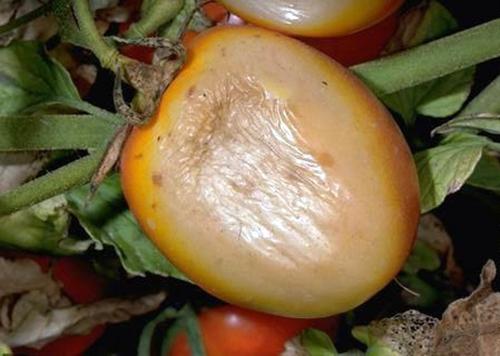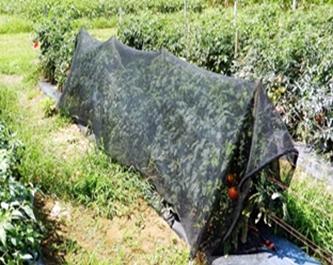Protecting Tomatoes during Hot Summer Days

Below is a list of suggestions to help your plants survive during those “Dog Days of Summer”:
1. Choose tomato varieties that are suited to your particular climate. Tomato varieties that tend to perform better in warmer areas include:
- Big Beef
- Black Krim
- Box Car Willie
- Cherokee Purple
- Mortgage Lifter
- Super Sweet 100
2. If you live in an area that tends to have extremely warm summer days, if possible, consider planting tomatoes where they can receive full morning sun and filtered shade in the afternoon. This works best with smaller tomatoes, as larger tomatoes need a minimum of 6 to 8 hours of sun daily.

4. Mulch, mulch, mulch. Adding 2-3 inches of organic mulch, such as rice straw, wood chips, dried grass clippings or other organic material will help reduce soil temperature and slow down moisture evaporation. Studies have shown that adequate mulching can reduce soil moisture loss by up to 70%.
5. Don’t be shy with the water. As temperatures rise above 90 degrees your plant is going to shift into survival mode. Using a moisture meter or, even better, your finger, probe 2–3 inches down into your soil to check for moisture. If the soil is dry you will need to water it. During the hottest days, you may wish to check multiple times. Keeping the soil moist can also help reduce fruit cracking and can reduce blossom drop. When temperatures are high, tomato plants may look like they are wilting, and it’s tempting to immediately add water. However, wilting is the tomato plant’s survival technique; the plant will perk back up when the sun goes down. Using your moisture meter first will keep you from overwatering.
6. Pick your fruit early. Tomatoes growing in warmer temperatures (up to 90 degrees) will have more color and a sweeter flavor, however, at 100 degrees, the fruit develops color on the outside but fails to ripen inside, leaving you with a poor tasting tomato. During these periods, pick your tomatoes early and allow them to fully ripen indoors, just remember not to put them in your refrigerator.

Article by Mike Corby, UC Master Gardener of Contra Costa County
